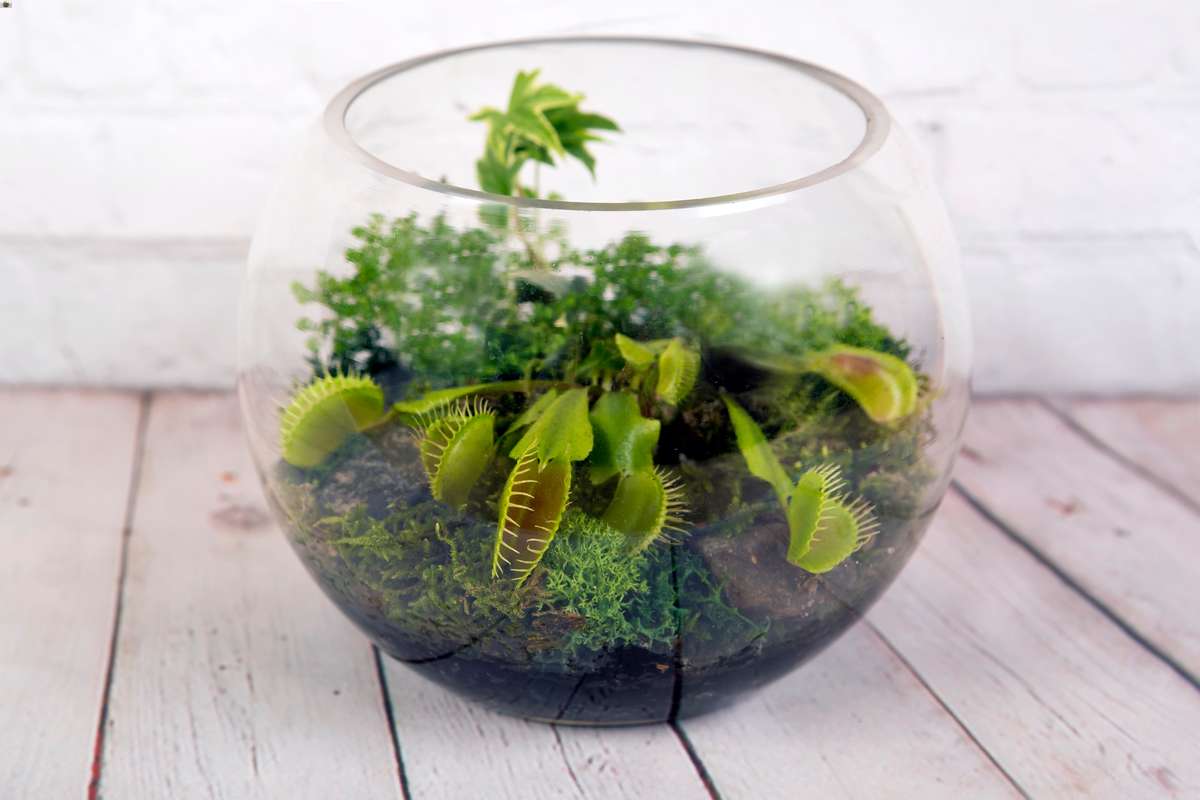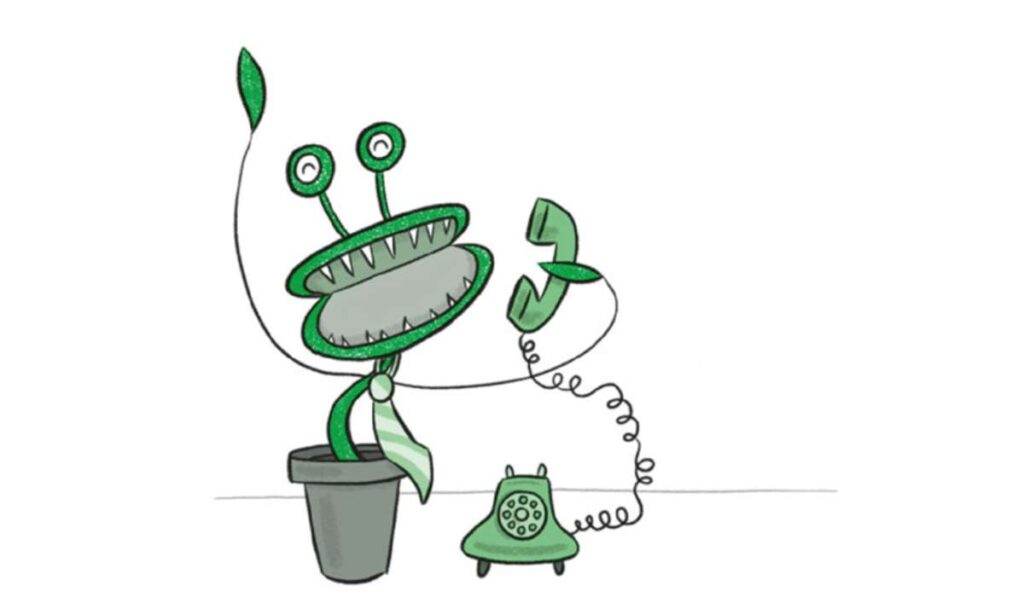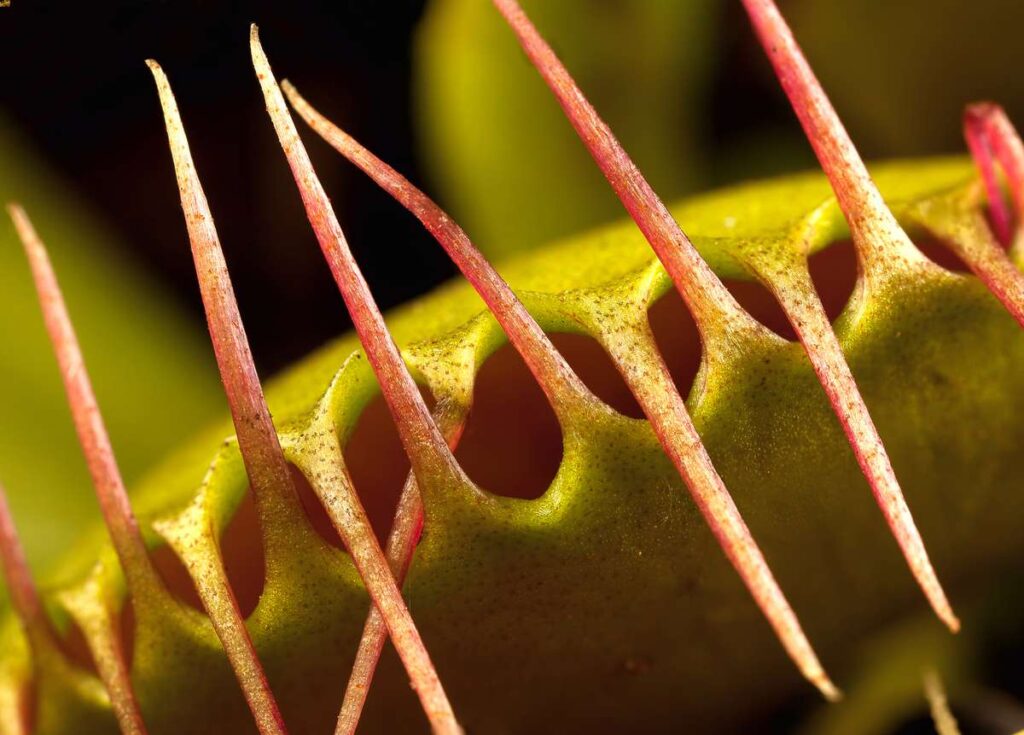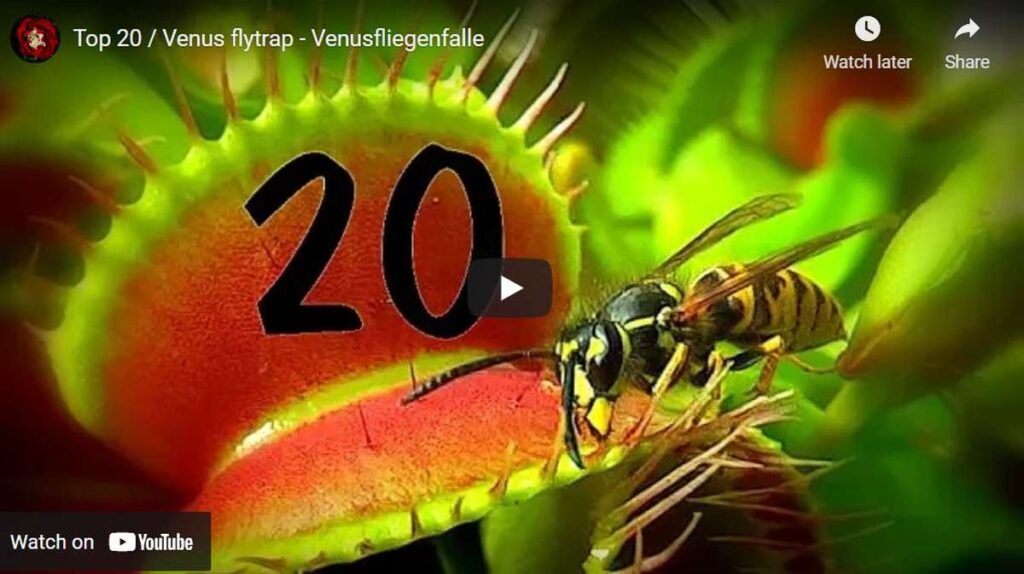Venus flytraps are really fun to grow, and whether you’re an expert gardener or a newbie green thumb, growing a Venus flytrap from seeds is a gratifying experience.
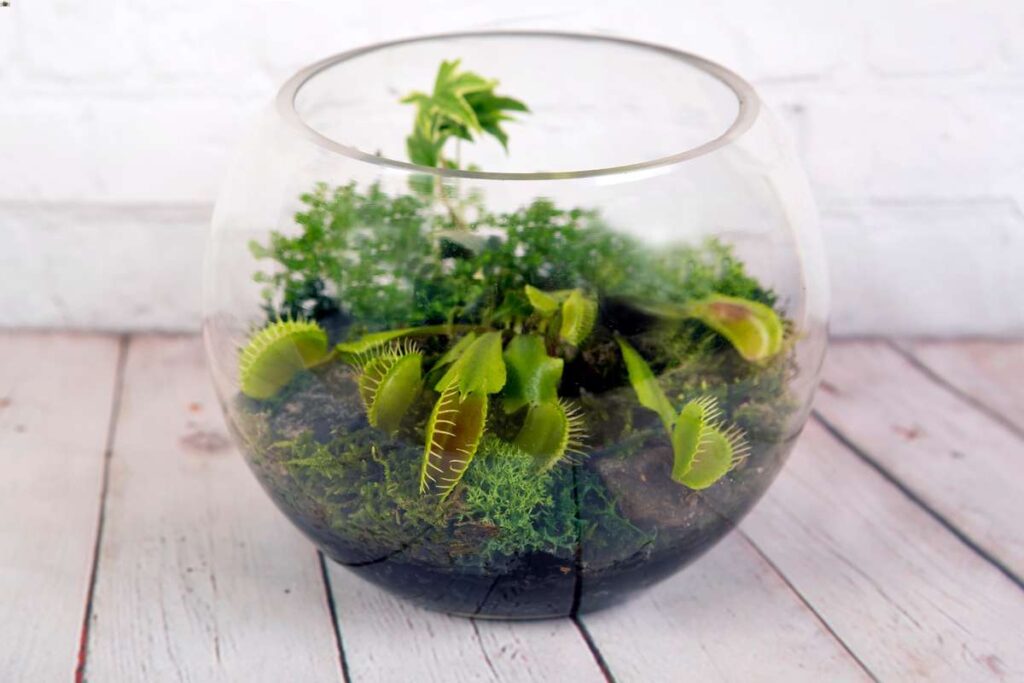
There are three ways to propagate indoor Venus flytraps: leaf-cutting, division, and growing from seed. Although you have to wait the longest for results when planting Venus flytrap seeds, the satisfaction of having a thriving Venus flytrap that you grew from seed is unrivaled.
The Venus flytrap is an exotic plant that demands exactitude from its gardener. However, anyone can grow a Venus flytrap with the right tools and know-how.
In this article, we cover growing Venus flytraps from seeds, all the way from planting, to germination, to your full-fledged flytrap. Let’s get started.
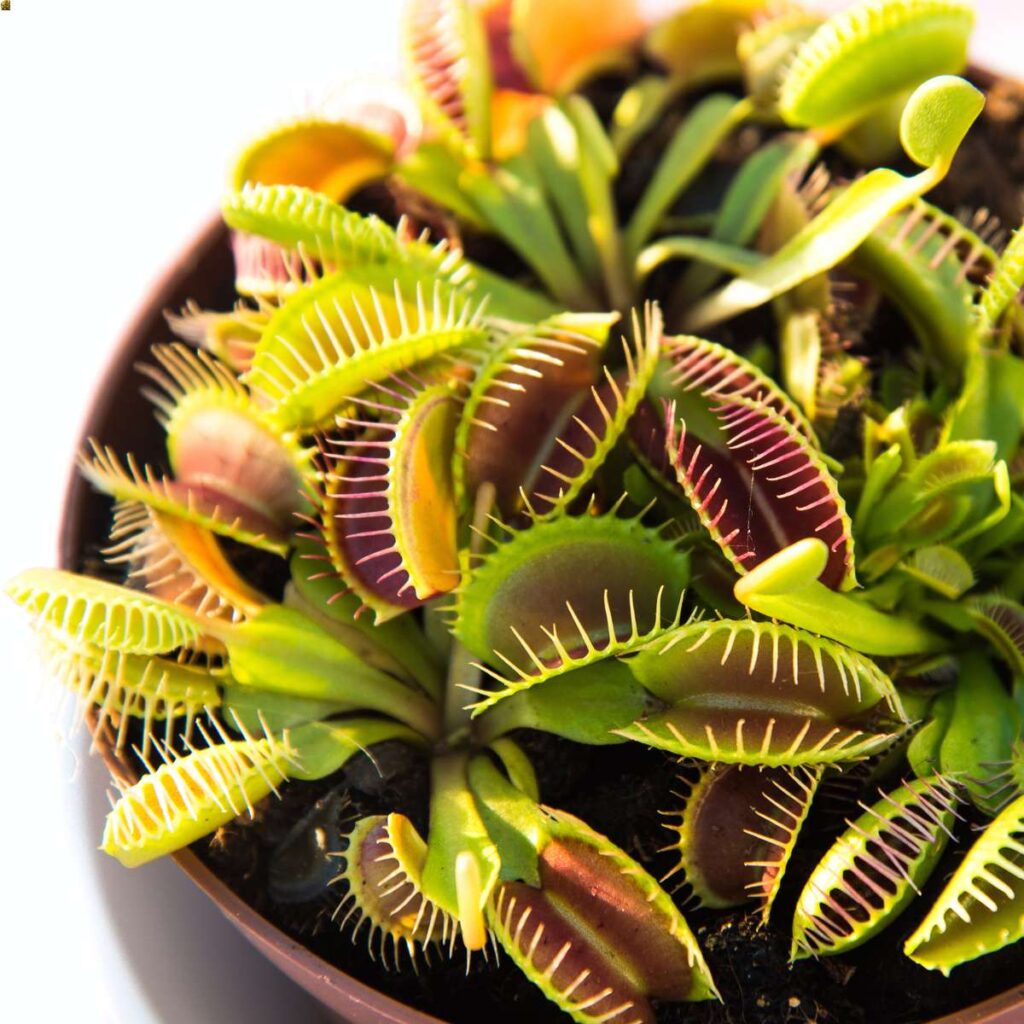
How Long Does a Venus Flytrap Seed Take To Germinate?
Unlike pitcher plants and other carnivorous plants, Venus flytraps do not require seed stratification to grow. Starting a Venus flytrap seed merely requires the right soil and the right time.
A Venus flytrap takes between one and five weeks for its seed to germinate. This will vary based on how warm of an environment in which your Venus flytrap is located.

Why Grow Seeds?
Growing Venus flytraps from seed is very rewarding. When your Venus flytrap has grown to adulthood, you can have the satisfaction of knowing it was all because of your hard work and dedication. Also, seeds are inexpensive, meaning anyone can learn how to grow a Venus flytrap cheaply.
The Steps to Growing a Venus Flytrap From Seed
Ready to start growing your very own Venus flytrap from a seed? Here’s everything you need to know about how to plant Venus flytrap seeds.
1. Acquiring the Venus Flytrap Seeds
The first step in our how-to-grow a Venus flytrap guide is acquiring your seeds. Venus flytrap seeds aren’t typically just sitting in packets at your local nursery ‒ so where do you get them? You can either buy your Venus flytrap seeds or harvest them from an existing plant.
Buying Venus Flytrap Seeds Online
Many online stores claim to have Venus flytrap seeds, but it’s best to order them online from a reputable carnivorous plant grower.

Harvesting Seeds from the Pods
If you already have Venus flytraps in your home, you can harvest the seeds from the plant. This is next-level gardening, and you’ll have to pollinate the Venus flytrap as well, something that’s beyond the breadth and scope of this article.
If you’ve successfully pollinated your Venus flytrap, small jet-black flowerheads will form, swelling up with tiny little seeds bursting out of the pods. You can cut the flower heads off, so you’re just left with the seed pods that formed on the end of the flytrap.
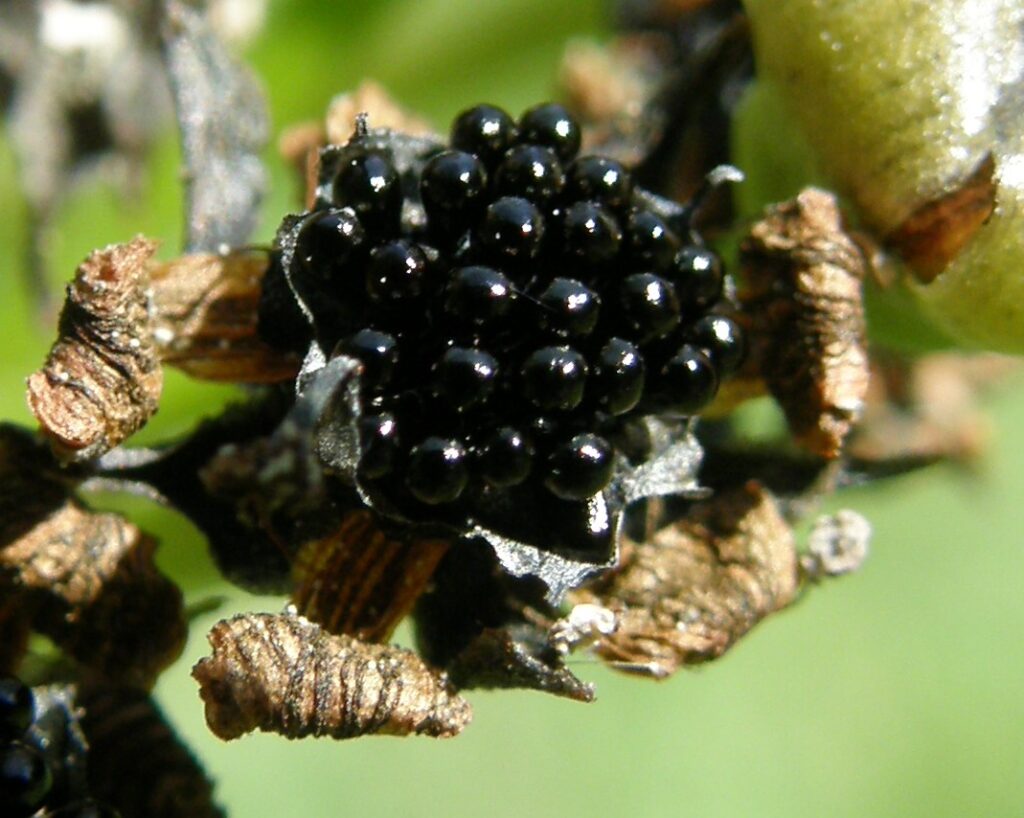
The seeds of the Venus flytrap are very small and black. To remove them from the pod, simply bring your thumb and index finger together and draw outward from the base of the pod to the tip. Do this gently so as not to tear the pod off the flowerhead. The thumb and index finger motion will extract the Venus flytrap seeds from their pods.
2. Choose the Right Venus Flytrap Soil
Now that you’re armed with your batch of seeds, it’s time to start planting them. You’ll want to use the same potting mix as you use for adult Venus flytraps.
The best soil for a Venus flytrap is a nutrient-free soil (we’ll come back to that in a minute) that allows for a lot of air but can also hold moisture.
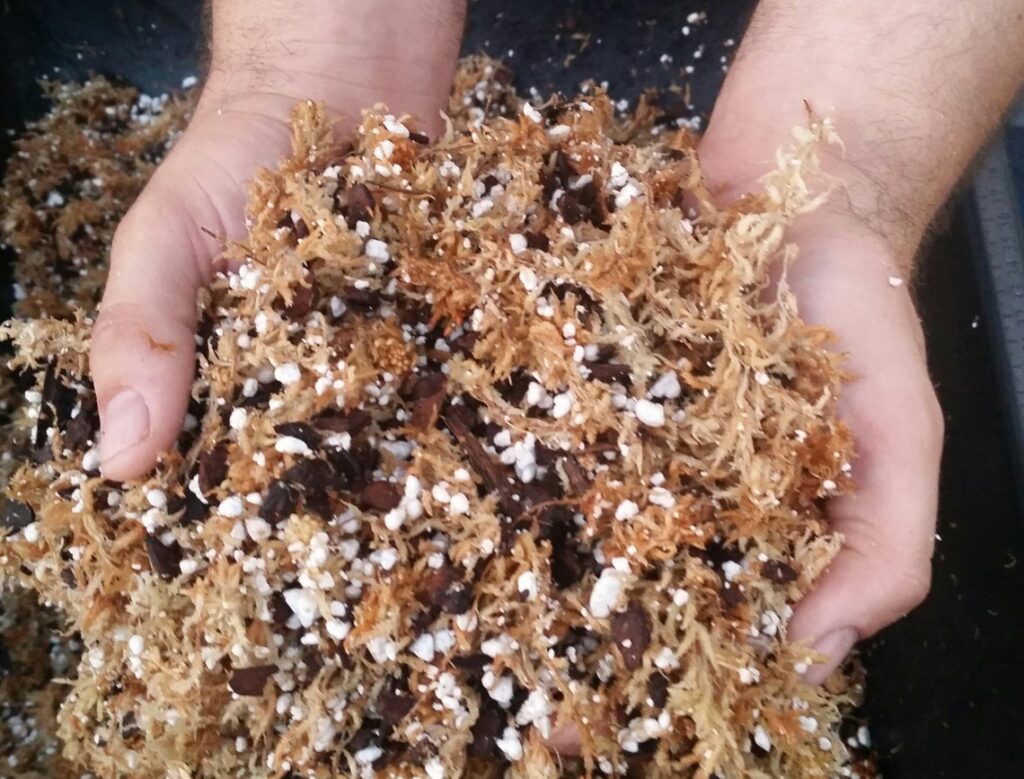
You can use carnivorous plant soil (used especially for carnivorous plants), or you can use peat or sphagnum moss. Many gardeners find success with pure sphagnum, though there are gardeners who swear by a 1:1 sphagnum moss and perlite mixture. Regardless, it’s essential that you don’t use standard potting soil.
Finally, don’t use any additives such as fertilizer. The excessive nitrogen in fertilizer will kill your Venus flytrap seeds before they even have a chance at life.
3. Prepare the Soil
I’m going to assume you’re using sphagnum moss, but these instructions apply to carnivorous plant soil and peat moss as well. Prepare two shallow (5 inches deep) containers filled with sphagnum moss. These shallow containers should have a drain hole at the bottom. Put them both in a wide dish that can hold water.
Using rainwater or distilled water, fill the sphagnum moss containers until the conditions resemble that of a swamp. Do not use tap water as it contains minerals and nutrients that will kill your Venus flytrap.
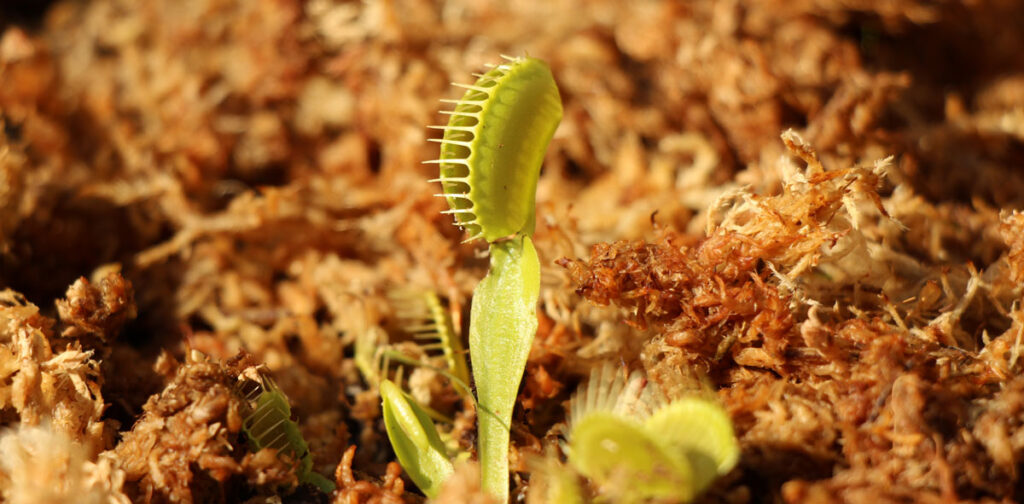
Take all your seeds in your hand and sprinkle them onto your trays.
Why do we use two trays? As with all conditions in which we grow from seed, mold and fungus can grow (although it’s less likely than with, for example, cacti). If you put all your eggs in one basket, or all your seeds in one container, you increase the likelihood of having a ruined crop.
4. Germinate Your Seeds in a High-Humidity Atmosphere
Venus flytraps love humidity, unlike other seedlings. Once you sow the seeds, you should put the containers in a large resealable bag and seal the bag. The bag acts as a kind of greenhouse for the seedlings, helping them germinate.
5. Care for Your Venus Flytrap Seedling
Once you begin to see signs of Venus flytrap seedlings springing from the soil, congratulations! The hard part is finished! Now open the bag to allow for the Venus flytraps to have some air as they grow.
Don’t put the seedlings in a cold place; try to expose them to the sunlight. However, don’t put the seedlings in an extremely hot place, as too much direct sun can boil the seeds and kill them. Put them in a high-light area without a lot of direct heat.
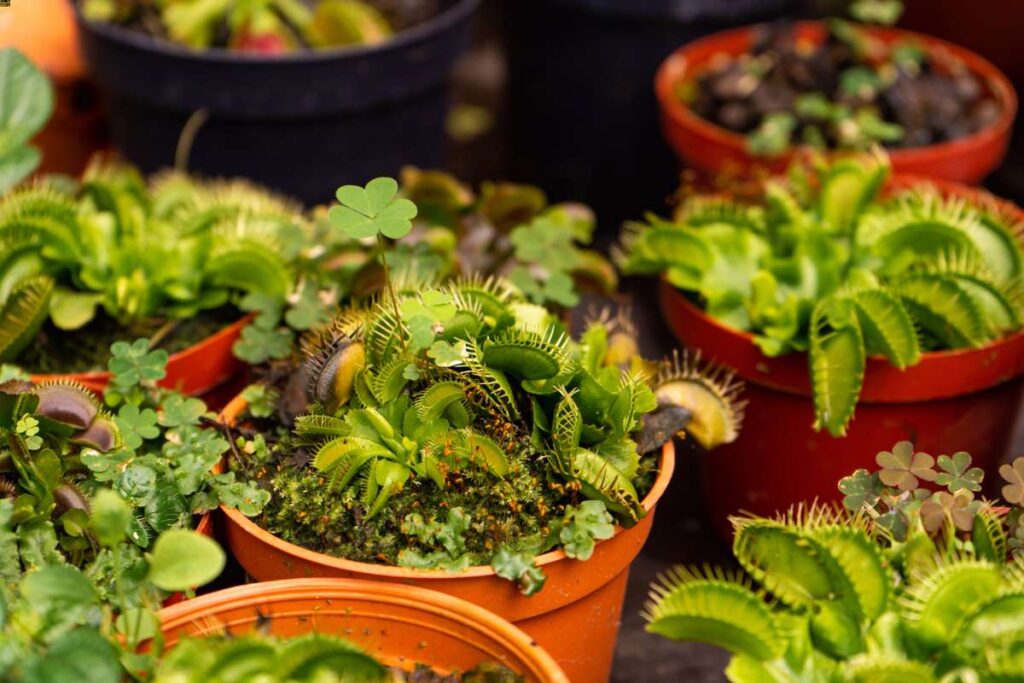
6. Repot Your Venus Flytrap
The root system for a Venus flytrap is very simple, meaning repotting is relatively straightforward. When it’s time to repot, turn down the container and take the soil out. Remove as much soil as possible from the root system, being gentle so you don’t tear up the root system.
Afterward, moisten your intended potting soil and pack it into the intended container. Fill the pot up to about three-quarters full and hold your new Venus flytrap directly where you want it to be when it’s in the soil. Using the other hand, fill in your soil.
Make sure you don’t bury the Venus flytrap too deeply. The crown should be showing because if you bury it too deep, it might rot. After repotting the flytrap, water the plant fully.
Don’t just plant your Venus flytrap in any old planter. Your Venus flytrap seedling will be a huge conversation starter, so be sure to showcase it in an awesome planter!
Once your plant grows big enough, be sure to learn what to feed your Venus flytrap to supplement the nutrients it gets from the sunlight.
7. Keep Growing Your Flytrap
If you started to grow your own Venus flytrap from seed, you’ll know the love and worry that comes with being a plant parent. If you followed the instructions in this article, caring for a Venus flytraps indoors shouldn’t cause you many problems.
You should repot your Venus fly trap every 1-2 years. This is the best solution to growing a Venus flytrap indoors because you need the peat moss to stay fresh so it can continue to retain water for your plant.
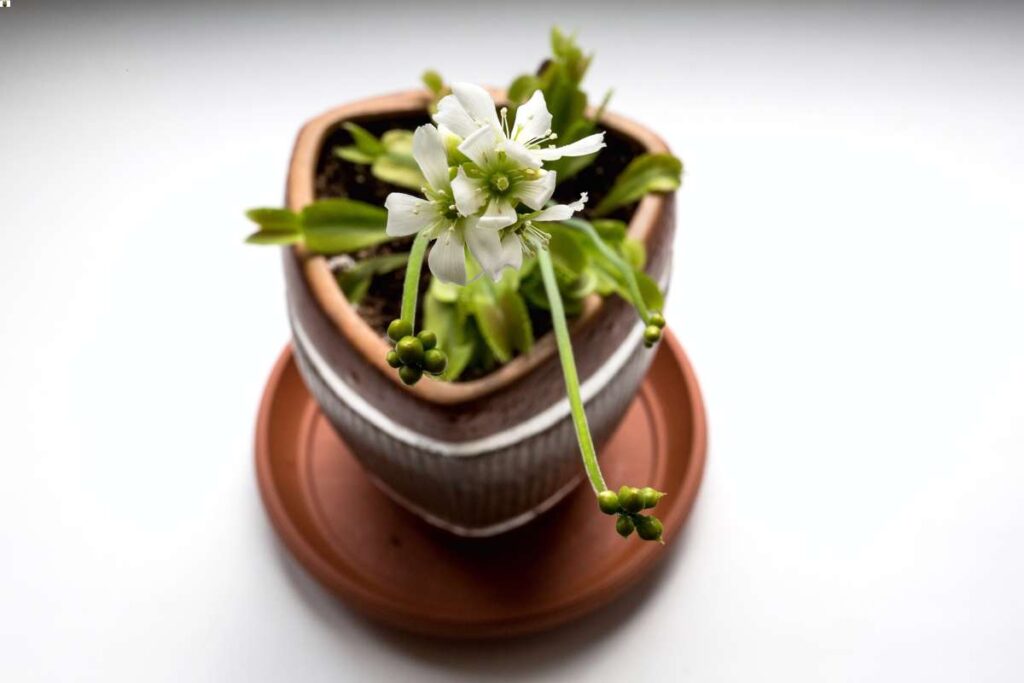
It’s also easy to care for a Venus flytrap outdoors too!
How Long Does a Venus Flytrap Take to Grow?
To get a nice, tall, healthy carnivorous plant, you’ll need to wait a few years. Keep its environment humid and comfortable, with regular watering. It might seem like a no-brainer, but the answer to the question “Do Venus flytraps need sunlight” is yes ‒ a lot of it.
Related Questions
Have more questions about how to grow a Venus flytrap from seed? Read below.
How Long Does It Take to Germinate a Venus Flytrap from Seed?
How long a Venus flytrap takes to grow from seed depends on various environmental factors, such as how sunny it is and how warm the growing conditions are for your plant. From sowing to germination can take anywhere from one to five weeks.
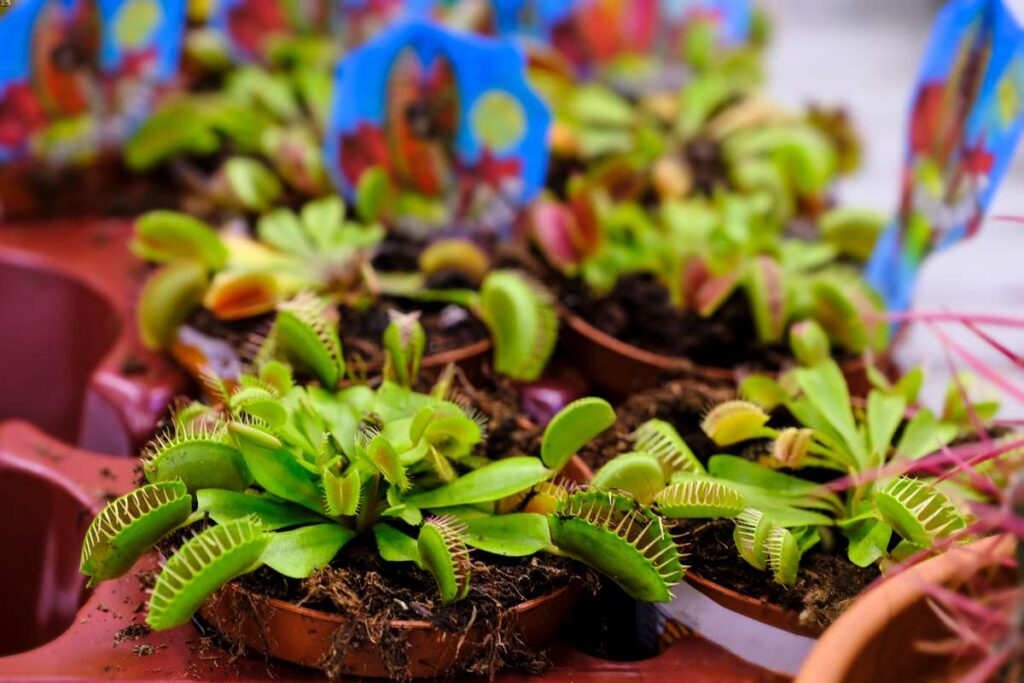
Are Venus Flytrap Seeds Easy to Grow?
Venus flytrap seeds require time, dedication, and effort to grow. Generally speaking, they are not easy to germinate. You need to take special care with respect to moisture, soil, and environmental conditions.
Is it Illegal to Grow a Venus Flytrap?
Venus flytrap seeds and live plants can be purchased and grown legally in many places.
For absolute clarity, while carnivorous plant enthusiasts can legally buy cultivated plants and seeds, it is a FELONY to harvest a wild Venus flytrap plant in its native North Carolina.
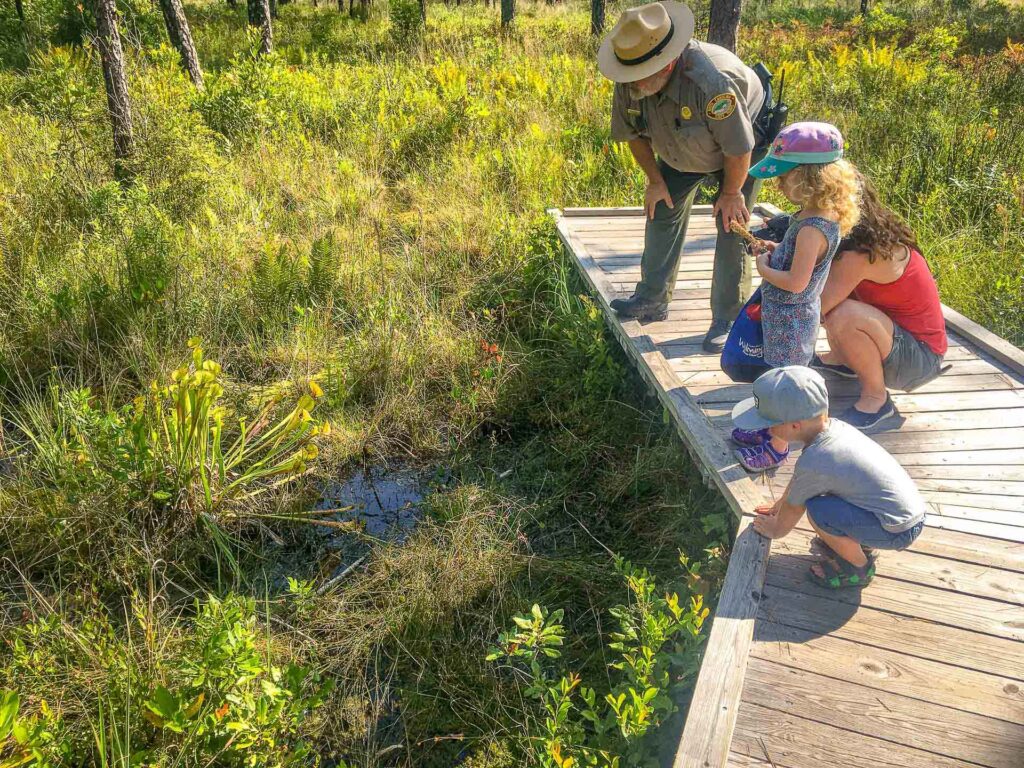
Which Carnivorous Plant Is the Easiest to Grow?
There are many types of carnivorous plants, each with its own difficulty. Once you know how to grow Venus flytrap, it’s not difficult, though it still takes time, dedication, and care. This includes things such as Venus flytrap soil and knowing how to plant a Venus flytrap.
Where Should I Buy My Venus Flytrap Seeds?
How to get Venus flytrap seeds can be difficult. To grow a Venus flytrap from seed can be challenging because you need to find trustworthy seeds. Buy your Venus flytrap seeds from a reputable seller who can guarantee your seeds will be of a high quality.
Once you know how to germinate Venus flytrap seeds, taking on the task of growing your own Venus flytrap is the most fulfilling way to raise this remarkable plant.
If, after reading our how-to guide for growing a Venus flytrap from seeds, you’ve decided you’d rather just buy a live plant, check out our guide to buying a Venus flytrap online.

